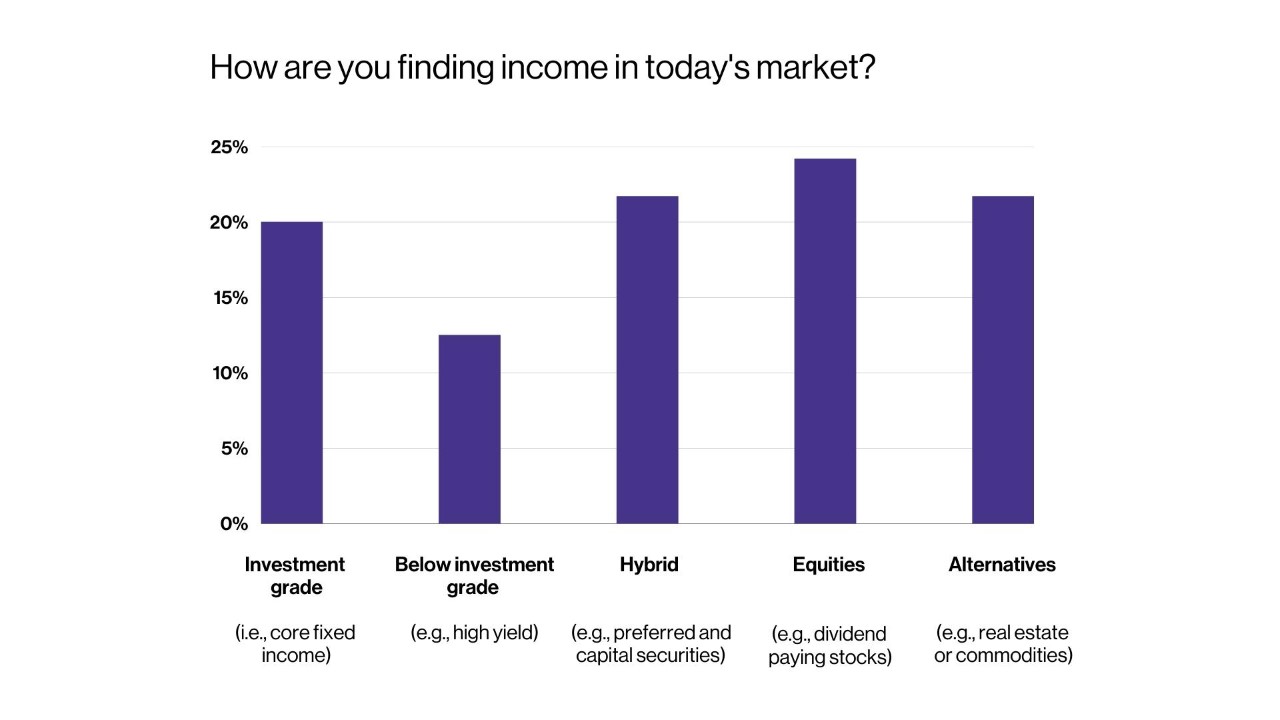As the Federal Reserve is poised to continue hiking interest rates into 2023, advisors are seeking alternatives to owning long-duration Treasuries for the income portion of their portfolios. Thankfully, they have a range of options to consider. In a late September webcast with Principal, VettaFi asked advisors how they were finding income in today’s market. No one sub-category offered garnered more than 25% of the poll results. However, dividend-paying equities (24%), alternatives like real estate (22%), and hybrid preferred and capital securities (22%) were all modestly more popular than investment-grade core fixed income (20%) or below-investment-grade (13%).

There are several dozen dividend-paying equity ETFs advisors can consider that are offered by asset managers. While there are differences in construction, they tend to fall into one of two camps: dividend growth and dividend yield.
The SPDR S&P Dividend ETF (SDY), which offered a 30-day SEC yield of 2.7% at the end of September, owns shares of companies that have raised dividends for 20 consecutive years.
The SPDR Portfolio S&P 500 High Dividend (SPYD), which offered a 30-day SEC yield of 5.0% at the end of September, owns shares of companies with above-average yields.
With dividend ETFs, it is important to understand the sector exposure. Relative to SPYD, SDY has high exposure to consumer staples, industrials, and materials sectors and less exposure to energy, financials, and real estate companies.
For advisors wanting more targeted exposure to the real estate sector as an alternative, there are many ETFs to consider. Most, like the Vanguard Real Estate ETF (VNQ), are broadly diversified across industries. VNQ had a 3.1% 30-day SEC yield and had exposure to specialized REITs (39% of assets), residential REITs (14%), industrial REITS (12%), retail REITs (11%), and healthcare REITs (8%) at the end of August.
The Pacer Benchmark Data & Infrastructure Real Estate ETF (SRVR), which recently had a 2.5% 30-day SEC yield, was more targeted to companies tied to data centers and tech infrastructure. Three companies, American Tower, Crown Castle, and Equinix comprised 45% of assets.
Meanwhile, preferred stocks have some characteristics of both common stocks and bonds, offering ownership and a fixed dividend. The iShares Preferred and Income Securities ETF (PFF) is one diversified example. PFF recently had a 5.6% 30-day SEC yield and had 67% of assets in financial institutions, mixed with exposure to industrials (19%) and utilities (13%).
The Invesco Financial Preferred ETF (PGF) offers more targeted exposure to just financial companies and has a similar 5.7% 30-day SEC yield. Unlike with dividend and real estate ETFs, with preferred ETFs, credit quality matters. PFF and PGF both were primarily focused on BBB- and BB-rated securities.
While there are many compelling alternatives to fixed income ETFs, advisors need to be mindful that such ETFs can and often do decline more than investment-grade bond products.
For more news, information, and strategy, visit VettaFi.
